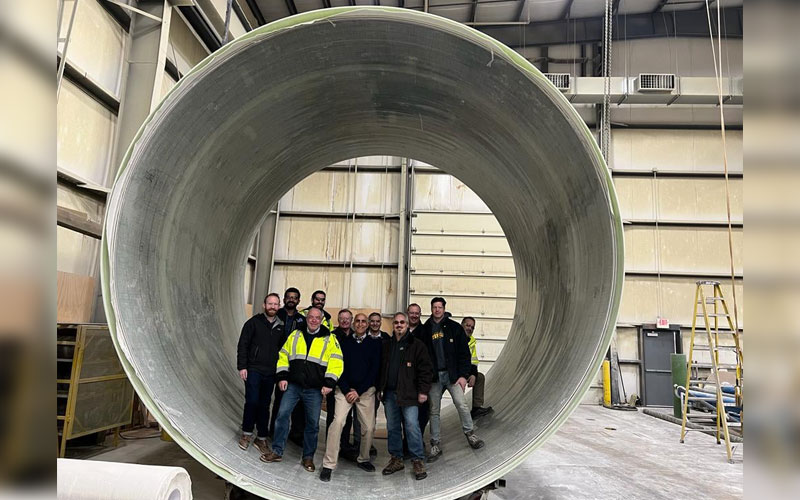StifPipe, QuakeWrap Inc’s large-diameter composite pipes, are currently being installed in the latest sewage infrastructure project in Detroit, Michigan. The 16-foot-diameter FRP pipes are set to transfer more than half of Detroit’s sewage from a pump station.
May 29, 2023

QuakeWrap Inc’s large-diameter composite pipes, known as StifPipe, are being installed in the latest sewage infrastructure project in Detroit, Michigan. QuakeWrap’s 16-foot-diameter FRP pipes are set to transfer more than half of Detroit’s sewage from a pump station. None of the previous projects have involved StifPipe at the scale required in the Detroit application. “What makes the Detroit project unique is that it’s probably the biggest polymer composite pipe in the world,” says Dr. Firat Sever, Pipeline Division manager at QuakeWrap. The pipes being installed in Detroit are 16 feet in diameter and only 2 inches thick. StifPipe is composed of 12 layers of material — four layers of carbon fiber, six layers of glass fiber and two layers of a proprietary core. One of the main advantages of StifPipe, according to QuakeWrap, is that it is relatively lightweight, which makes installation easier.
“The weight of StifPipe for this project is about 450-500 pounds per foot. For each segment, you’re talking about less than four tons, and that is amazingly light — about 10% the weight of concrete and steel and less than 25% of factory-made, mortar core fiberglass pipes. That says a lot during construction, and contractors love that aspect of the composite pipes,” says Sever. StifPipe’s lightweight design means it does not need jacking equipment for its installation and it is advantageous during the shipping process. “This pipe has the highest strength-to-weight ratio of any pipe on the market,” contends Dr. Mo Ehsani, founder and president of QuakeWrap. “That makes it really lightweight, and it doesn’t corrode, so it has a lot of advantages. When you use a thicker wall liner that is made of less strong materials, then you will lose hydraulic capacity [the optimal flow of wastewater and that’s quite important, especially when you convey huge volumes of fluid or water.”










